Paid to study, research and communicate science
Undergraduate scientists at the University of Saint Francis are receiving scholarships from the National Science Foundation to learn and share their knowledge with children, teenagers, the public and industry – and it’s all in the name of Britain’s first scientist, Roger Bacon
- Roger Bacon lived from around 1214 to 1292 (his place and date of birth are unknown), and studied and taught at Oxford University in England
- He was an English philosopher and scientist – and was also believed to be a Franciscan Friar
- His research led to the development of glasses to improve eyesight
- He was imprisoned for having an interest in magic
- He believed that there is more to science than simply arguing about scientific concepts; science had to be experimented with and experienced. This idea forms the basis of the University of Saint Francis’ Scholars programme.
*Source: BBC History
Initiated in 2014, USF has supported 16 Roger Bacon Scholars in the programme. Students hoping to study an undergraduate STEM subject (such as biology, chemistry, science and entrepreneurship, environmental science and mathematics) at the University can apply. Successful applicants not only receive scholarships from the National Science Foundation throughout their academic experience, they’re also taught a life-long valuable skill: science communication.
WHAT HAPPENS IN THE SCHOLARS PROGRAMME?
The transition from school to university can be a challenge for any student. However, the students accepted in the Roger Bacon Scholars programme receive lots of additional support. They’re mentored and tutored by professors and students at the university, and by people working in companies that are relevant to the subject of their research. They attend networking sessions and luncheons, run by USF’s Career Services Office, that focus on developing the communication skills required to be successful in scientific internships and careers. The students also visit industry sites to create relationships with potential employers.
Unlike traditional undergraduate degree programmes, the students aren’t just given information in a series of lectures that they’re expected to learn; they have chances to apply the science they’re taught both inside and outside the classroom to understand how it impacts the real world. In an environmental chemistry course, for example, Roger Bacon Scholar Tyler Lengerich worked with the Department of Health to collect paint chips from houses. He tested them in the lab to check whether there was any lead in these chips, which can be a health concern, and he did this for free.
IN WHAT WAY ARE THE STUDENTS MAKING A DIFFERENCE?
In their second year at USF, students work side-by-side with a research mentor to design a research project that seeks a solution to a scientific question, which is inspired by real world needs. In their third year, the students complete the project and present their results at scientific conferences.
The four-year programme builds up to a capstone experience, which allows students to reflect on their academic, social and spiritual growth throughout their time at USF. As part of their Roger Bacon capstone expectations, the scholars create an outreach project for an elementary, middle or high school class. The aim of this outreach project is to teach an important aspect of their scientific research to schoolchildren.
This unique approach helps the scholars develop their communication skills, gain experience working with a broad range of individuals or groups, and foster critical thinking and creativity. What’s more, these students are inspiring the next generation of scientists by sharing their enthusiasm for and knowledge in STEM subjects – skills that are helping Roger Bacon scholars maximise their employability.
Indeed, the Roger Bacon Scholars programme prepares graduates for a wide variety of career opportunities, enabling them to use their science degree to really make a difference in the world.
MEET TWO ROGER BACON SCHOLARS
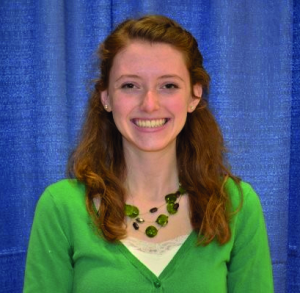 KAITELYN VACHON
KAITELYN VACHON Kaitelyn has a BS in biology from USF with a minor in environmental sciences. She currently works for a local environmental waste management facility. When Kaitelyn was growing up, she was always fascinated by science, but it wasn’t until she took part in biomedical project-based learning classes in high school that her interest in biology was sparked.
MENTORS: Dr Andrea Geyer and Mr Warren Pryor
RESEARCH PROJECT: Studying the wider effects of pesticides on animals in the environment, beyond the insects that are pests.
OUTREACH: Introducing sea anemones to kindergarten students to create an understanding of how they are affected by pollution.
FUNDER: National Science Foundation
Reference
https://doi.org/10.33424/FUTURUM08
WHAT HAPPENS IN THE SCHOLARS PROGRAMME?
The transition from school to university can be a challenge for any student. However, the students accepted in the Roger Bacon Scholars programme receive lots of additional support. They’re mentored and tutored by professors and students at the university, and by people working in companies that are relevant to the subject of their research. They attend networking sessions and luncheons, run by USF’s Career Services Office, that focus on developing the communication skills required to be successful in scientific internships and careers. The students also visit industry sites to create relationships with potential employers. Unlike traditional undergraduate degree programmes, the students aren’t just given information in a series of lectures that they’re expected to learn; they have chances to apply the science they’re taught both inside and outside the classroom to understand how it impacts the real world. In an environmental chemistry course, for example, Roger Bacon Scholar Tyler Lengerich worked with the Department of Health to collect paint chips from houses. He tested them in the lab to check whether there was any lead in these chips, which can be a health concern, and he did this for free.
IN WHAT WAY ARE THE STUDENTS MAKING A DIFFERENCE?
In their second year at USF, students work side-by-side with a research mentor to design a research project that seeks a solution to a scientific question, which is inspired by real world needs. In their third year, the students complete the project and present their results at scientific conferences. The four-year programme builds up to a capstone experience, which allows students to reflect on their academic, social and spiritual growth throughout their time at USF. As part of their Roger Bacon capstone expectations, the scholars create an outreach project for an elementary, middle or high school class. The aim of this outreach project is to teach an important aspect of their scientific research to schoolchildren. This unique approach helps the scholars develop their communication skills, gain experience working with a broad range of individuals or groups, and foster critical thinking and creativity. What’s more, these students are inspiring the next generation of scientists by sharing their enthusiasm for and knowledge in STEM subjects – skills that are helping Roger Bacon scholars maximise their employability. Indeed, the Roger Bacon Scholars programme prepares graduates for a wide variety of career opportunities, enabling them to use their science degree to really make a difference in the world.
MEET TWO ROGER BACON SCHOLARS
 KAITELYN VACHON
KAITELYN VACHON Kaitelyn has a BS in biology from USF with a minor in environmental sciences. She currently works for a local environmental waste management facility. When Kaitelyn was growing up, she was always fascinated by science, but it wasn’t until she took part in biomedical project-based learning classes in high school that her interest in biology was sparked.
MENTORS: Dr Andrea Geyer and Mr Warren Pryor
RESEARCH PROJECT: Studying the wider effects of pesticides on animals in the environment, beyond the insects that are pests.
OUTREACH: Introducing sea anemones to kindergarten students to create an understanding of how they are affected by pollution.
FUNDER: National Science Foundation
Clothianidin is a very effective chemical that kills insects that eat the plants that farmers are trying to grow. It causes the bugs to become paralysed and then die. Unfortunately, it’s not only the unwanted insects that come into contact with such chemicals; there’s increasing concern that they’re affecting populations of bees, which are important for pollinating plants and producing honey.
HOW CAN STUDYING SEA ANEMONES HELP US UNDERSTAND WHAT’S HAPPENING TO BEES?
Sea anemones are easy to raise in the quantities we need for our research, and they aren’t mobile. This means that their central nervous system, which controls how they move, is simpler to study. Their system is also more simplistic than that of bees, allowing us to study how pesticides influence movement a lot easier. Then, we can use this initial model – sea anemones – to begin to understand how the more complex, endangered bee species may be influenced by pesticides. While we’re mainly trying to investigate the effects that pesticides are having on bee populations, the research is also meaningful for sea anemones because they can be influenced by pesticide exposure when chemicals are washed into the sea.
WHAT HAVE BEEN YOUR MAIN RESULTS SO FAR?
Our research has found that as levels of pesticide increase, the sea anemones move their tentacles more and more slowly until they become paralysed and cannot move them at all. If you watch the animals closely, you can see their bodies become still almost immediately after they are exposed to the pesticide.
I was hoping to be able to identify a ‘safe’ level of pesticide, but even using the tiniest amount of chemical (one drop diluted 3 billion times) still caused the sea anemones to display temporary paralysis. Further experiments will be needed to find the smallest amount of pesticide that causes paralysis.
THE ROGER BACON SCHOLARS PROGRAMME ENCOURAGES YOU TO PRESENT YOUR WORK AT CONFERENCES, COMMUNITY EVENTS AND IN SCHOOLS. HOW IMPORTANT IS THIS OUTREACH?
The outreach aspect of the research is the part that I get most excited about. There are hundreds of thousands of research projects going on around the world, but what’s the point of all that effort if no one can understand the importance? We unfortunately live in a society where science is still considered ‘scary’ and, because of that, I wanted to make sure I was able to present my research in a friendly way on several platforms.
YOU INTRODUCED YOUR RESEARCH ON SEA ANEMONES TO KINDERGARTEN CHILDREN. WHAT DO YOU HOPE THEY GOT OUT OF THIS EXPERIENCE?
My goal with the children was for them to understand what sea anemones were and how they interact with the environment. I wanted to take concepts that they understood, such as recycling, and link it to pollution to give them a ‘mascot’ to cheer for in nature. Not only did we talk about sea anemones, but the kids also had the opportunity to feed them and see how the animals protect themselves.
“The kindergarten students enjoyed the sea anemone experience. The hands-on activities were age appropriate and the presenter was very well prepared. This was a wonderful opportunity for my young students to learn about something that would not normally be part of our curriculum.” Virginia Simpson, kindergarten teacher at Queen of Angels Catholic PreSchool
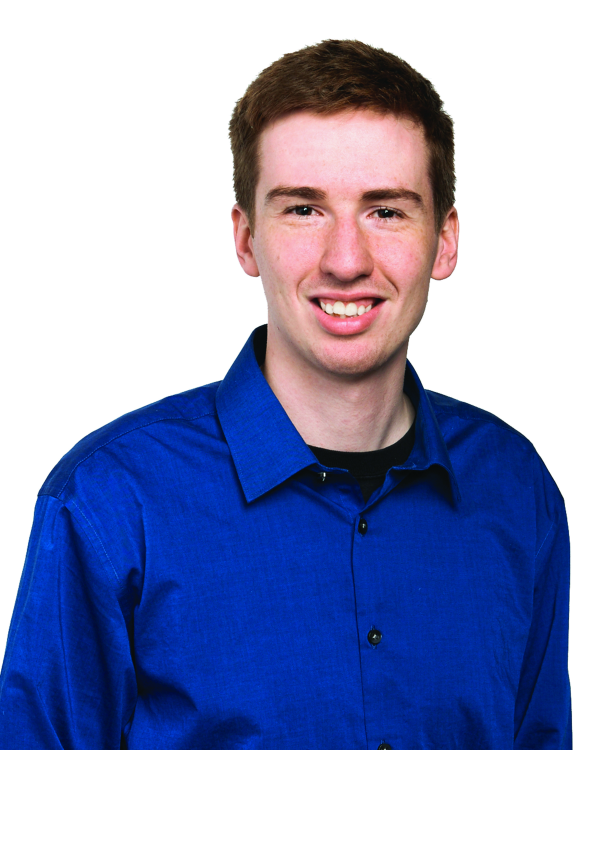 PETER MITCHELL
PETER MITCHELL Peter Mitchell is a student in computer information systems at USF. As a child, he loved technology and would try to fix computers whenever he could. As this passion continued through high school, a degree in computer information systems seemed like an obvious choice. Once he graduates, Peter hopes to find a job that will make use of his experience in game design or audio networks.
MENTORS: Mr Rick Miller
RESEARCH PROJECT: Creative game design in DeKalb’s Mutation Invasion.
OUTREACH: Introducing the importance of planning in game development to 9th graders in DeKalb High School using their Mutation Invasion project. The project offers the students a chance to develop their own concept for a computer game and get a taste of what a career in computer science has to offer.
FUNDER: National Science Foundation
Mutation Invasion is a project developed by DeKalb High School that involves designing a video or board game to save humanity and eradicate illness. The game must include a scientific discovery that helps find a cure, environmental factors that affect how the disease spreads, and a map showing where the disease has infected people. The project involves figuring out technical requirements, designing the game, building it using code, testing the game and further developing it based on the results of the tests.
WHAT DIFFICULTIES DID YOU FACE WHILE DESIGNING YOUR GAME?
My game development project was part of a final assignment in one of my programming classes. I worked on the project for most of a semester with two other students. Although we made a plan and a timeline, we had lots of big ideas that were unrealistic to put into practice with the time and resources we had. Because there was no clear leader of the group we often worked on the same parts of the project and we fell behind the plan. Although the game didn’t end up being what we imagined and was missing lots of the features, I’m proud of the finished product. Not only that, I’ve learned a lot of important skills – team working, time management, managing expectations, and much, much more – all of which will help me in the future.
HOW DID YOU GET THE HIGH SCHOOL STUDENTS INVOLVED WITH YOUR PROJECT?
At the beginning of the Mutation Invasion Project at Dekalb High School, I shared the lessons I learned from my programming class project. From there the students began to make a game case to introduce the type of game they would make and the disease that would feature. They then made a game trailer to set the scene and a multimedia presentation to outline the main features of the game, such as geography/biology of the disease, the characters and the environment. They were also invited to play a portion of the game that I had created as part of my undergraduate project to further understand the content and goal. The students were asked to present their game idea to a panel of judges, which included myself.
HOW DID YOU BENEFIT FROM THE OUTREACH ASPECT OF YOUR COURSE?
Going into the high school classroom gave me the experience of presenting in a professional way in front of a large audience. It also gave me the opportunity to provide constructive criticism.
WHAT DO YOU HOPE THE HIGH SCHOOL STUDENTS GOT OUT OF THIS EXPERIENCE?
I hope that they were able to see the quality of the computer science programme at USF, and that I encouraged them to think about a career in computer science. I also hope that I helped them with their projects by providing quality feedback and sharing my experiences.
“When Peter Mitchell spoke about his college experience in pursuit of career possibilities, the high school students also began to envision possibilities for their own future. When young people are exposed to aspiring career professionals that are not much older than them, it is empowering in a sense that encourages self- actualisation.” Kelsey Pierce and Christina Lapham, teachers at DeKalb High School

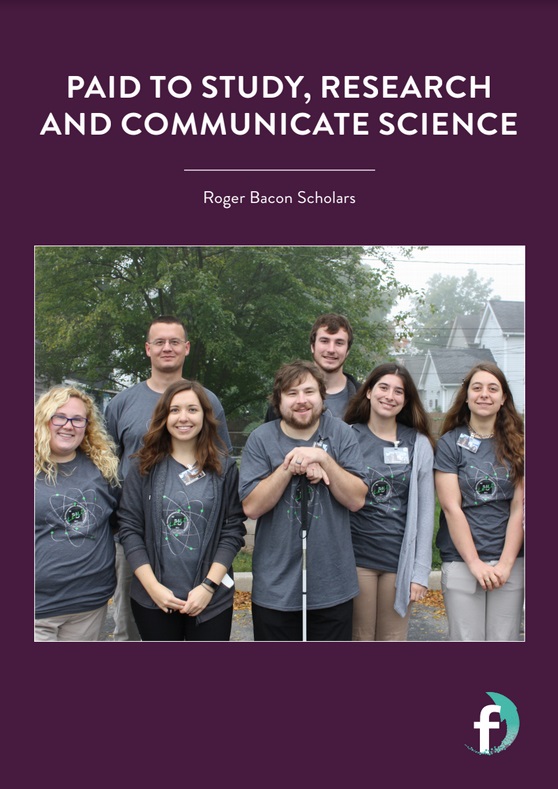
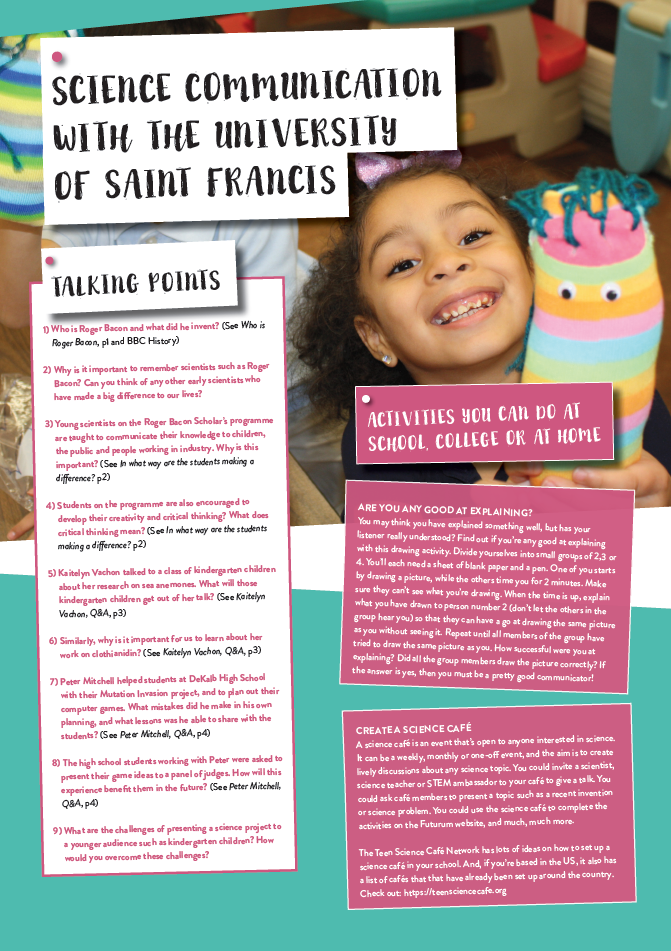
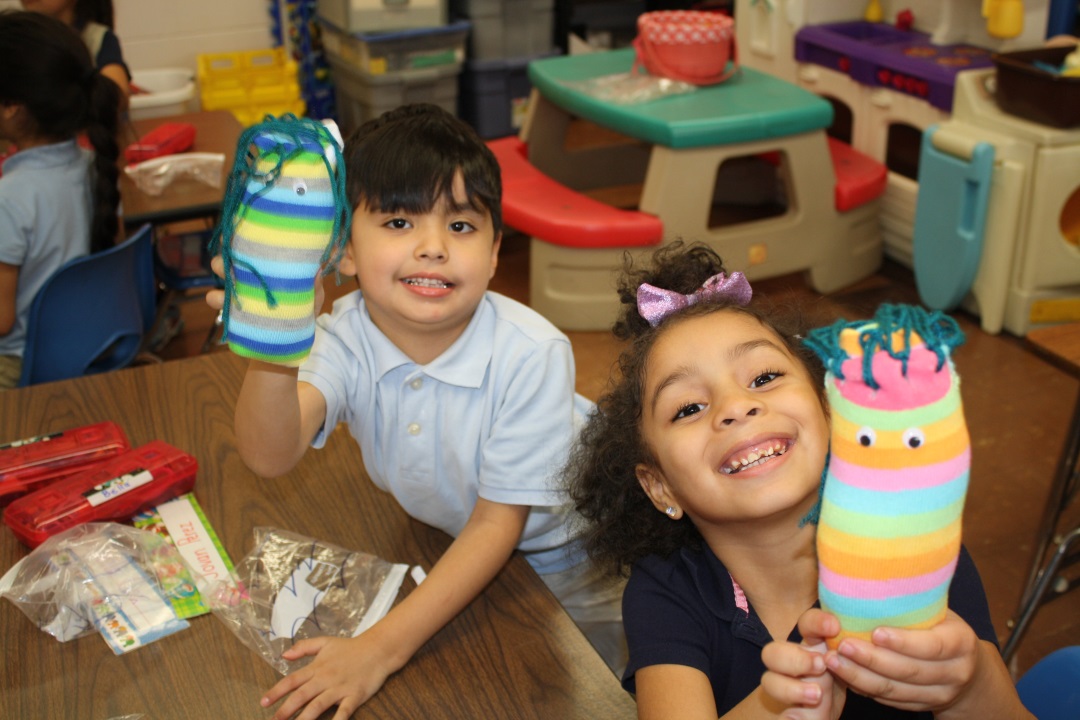




What tips could Peter and Kaitelyn give for someone nervous about presenting their findings, especially to an audience with no previous knowledge about the subject?
Be confident. Make sure that you practice beforehand and that you know the material you are covering.
If you are talking to someone who has no knowledge of the subject, make sure you explain things simply and do not use any terms that the audience would not know.
I would say : think of it like some of your classes. The first few weeks are spent building the basics followed up by increasing knowledge and difficulty. That is exactly how presentations go but in a shorter period of time.
When I’m listening to a presentation or class I try to pay attention to the whole picture. Your professors/instructors/teachers have more to teach than just their subject matter. Observe and learn what teaching styles are most effective (or least effective) at conveying information and use that for your own presentations.